- europages
- >
- COMPANIES - SUPPLIERS - SERVICE PROVIDERS
- >
- scientific and technical monitoring
Results for
Scientific and technical monitoring - Import export

TAOBÉ CONSULTING
Belgium
A thorough toxicological evaluation on raw materials is key if your company has ambition to sell raw materials to European manufacturers, as the raw materials must meet certain requirements to guarantee their safe use in cosmetic products. By making this evaluation available, you increase the sales possibilities all over Europe. This is also a key step to be able to approach the big players (L’Oréal, Estée Lauder, etc.) who will consider you as a serious partners as you will show a non-negotiable approach to quality and ensure the highest level of effectiveness and safety to end-customers. Taobé’s safety assessors will be able to develop a Dossier including: -A full toxicological assessment report of the raw material, according to the SCCS Notes of Guidance, demonstrating the safety of the cosmetic ingredient/s according to the utmost authority in Europe. -A CLP SDS, to provide to importers for REACH notification.
Request for a quote
TAOBÉ CONSULTING
Belgium
The very first step of every cosmetics registration in Europe starts with the full assessment of the formula of the product to confirm it meets the EU requirements. During this step, our Safety Assessors will: - Check all documents related to the ingredient (MSDS/COA/Non-animal testing/IFRA, etc.). - Verify that the ingredients do not have restrictions established by European regulations and that the limits of use (if there are any) are in compliance. - Check that the ingredients used are suitable for cosmetics (cosmetic grade ingredients). - Check the toxicological profile of each ingredient. - Verify if the ingredient contains any impurity. - Check the SCCS opinions, industry guidelines and other regulations (REACH, CLP). - Calculate the MoS (Margin of Safety) for each ingredient and/or search for supporting documents (reliable literature) that declare each ingredient safe at the added dose in the finished product.
Request for a quote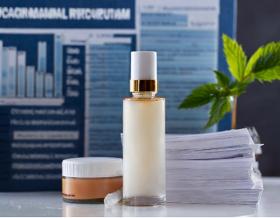
TAOBÉ CONSULTING
Belgium
The CPSR consists of two parts, A and B: in Annex I of the Cosmetics Regulation, all the information that must be collected and processed by the Safety Evaluator in order to identify and quantify the dangers that the cosmetic product may present for the human health, namely: PART A contains information on the safety of the cosmetic product, such as: 1. Quantitative and qualitative composition of cosmetic products; 2. Physical/chemical characteristics and stability of the cosmetic product; 3. Microbiological quality; 4. Impurities, traces, information on packaging material; 5. Normal and reasonably foreseeable use; 6. Exposure to the cosmetic product; 7. Exposure to substances and calculation of the MoS; 8. Toxicological profile of substances; 9. Undesirable effects and serious undesirable effects; 10. Information about the cosmetic product. PART B holds the conclusion, the warnings and instructions of use to label, the scientific reasoning and the assessor's diploma.
Request for a quote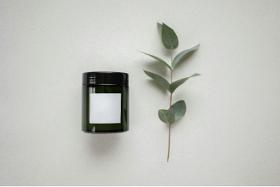
TAOBÉ CONSULTING
Belgium
All cosmetic products must display the following mandatory information on both the container (inner label) and packaging (outer label): - Name and address of the Responsible Person - Nominal content - Date of minimum duration or PAO - Country of origin (if the product is imported into the community) - Product function (unless it’s clear from its presentation) However, there are exceptions for the following three items, which we will discuss in detail later in this article. - Warnings - Batch number - INCI list Please keep in mind that the items mentioned above are specified in EU Regulation 1223/2009, which outlines the requirements for cosmetics. However, it’s important to understand that various laws govern product labelling, such as the Packaging & Waste regulations, which can vary from country to country. We encourage you to explore our article on Labelling and Packaging Regulations for more information, including details about recycling symbols.
Request for a quote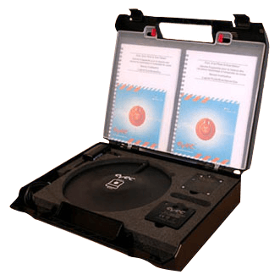
MICROMEGA DYNAMICS S.A.
Belgium
Our innovative measurement system allows for vibration measurements to be taken of whole-body vibration exposure according to ISO 2631. Its autonomous sensors that do not need to be wired during measurements and automated artefact detection provide for a user-friendly implementation and use (can be used by non-experts). Stored data is downloaded from the sensor(s) at the end of the working period to a smartphone or a PC using a Bluetooth connection. The software allows for the automatic computation and display of workers’ exposure to whole-body vibrations and indicates how such exposure compares with the limit and action values defined in the vibration Directive. The set of whole-body vibration meters (Vib@Work Seat, Vib@Work Floor & Vib@Work Detect) can measure the vibration exposure of either seated or standing operators. In addition, when used in conjunction, seat efficiency can also be measured (i.e. S.E.A.T. factors).
Request for a quoteDo you sell or make similar products?
Sign up to europages and have your products listed
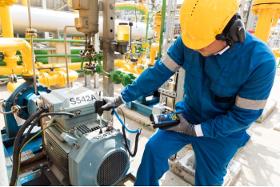
SDT ULTRASOUND SOLUTIONS
Belgium
Detecting mechanical faults before they stop production Bearing and Machine Maintenance Industry runs on machinery. Bearings, pumps, electric motors, compressors, presses, gearboxes and much more. All of which can break unexpectedly, causing production to stop. When production stops your organization loses money. Few bearings make it to the end of their engineered lifecycle. This is due to poor workmanship, bad lubrication practices and neglect. Problems can even arise right after installation due poor installment of the machine. No two machines are the same. Across industry, machines operate under different loads, climates and conditions, making their maintenance requirements unpredictable. Many machines are still maintained on calendar based PM’s, while others are run-to-failure. Both strategies are wasteful.
Request for a quote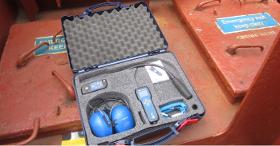
SDT ULTRASOUND SOLUTIONS
Belgium
SDT was the first to pioneer on ultrasound-based hatch cover weathertightness testing on board of ships back in the late 1980s. Together with MacGregor, Lloyds Register of Shipping and IMCS, SDT was able to put ultrasound testing of hatch covers on the world map and make it the preferred method for testing hatch covers by charterers, shippers, P&I insurers and stakeholders in the marine industry. Another first position for SDT is that further development of the tightness testing equipment resulted in SDT launching the world’s first Class type approved and bespoke SHERLOG product range in 2000. Ever since, the SDT SHERLOG equipment became a symbol of reliable and professional hatch cover testing. As no solution is complete without training, SDT & IMCS developed the first and only training course for ultrasound testing of hatch covers in line with the IACS UR Z17 criteria.
Request for a quoteResults for
Scientific and technical monitoring - Import exportNumber of results
8 ProductsCompany type